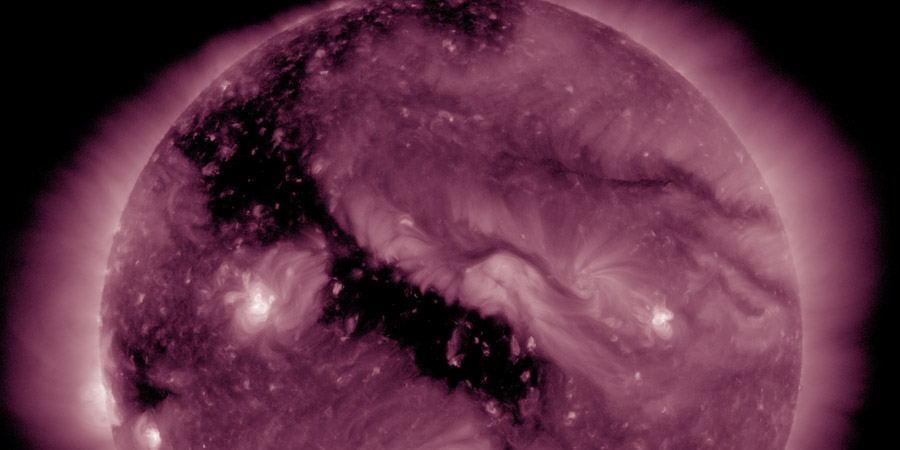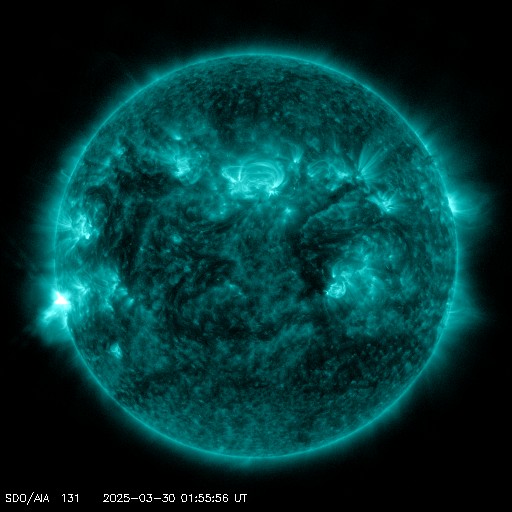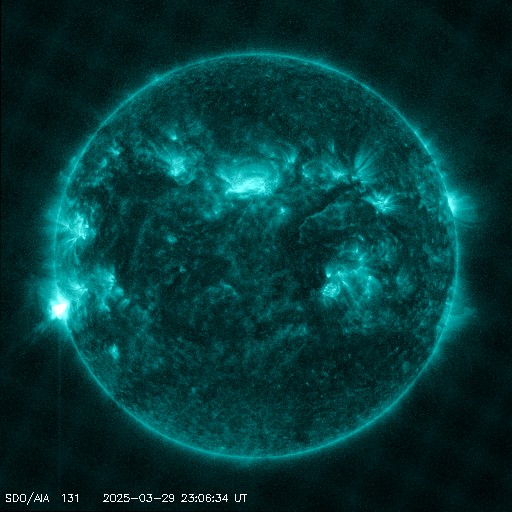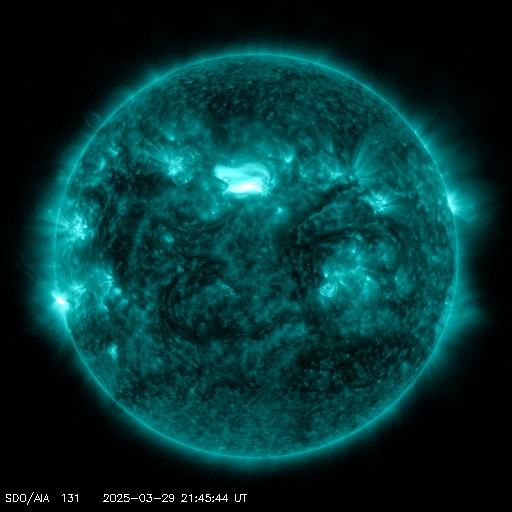Coronal hole faces Earth, G2 watch issued
Sunday, 31 July 2016 11:52 UTC

A large trans-equatorial extension of the northern hemisphere polar coronal hole is now facing Earth.
The solar wind stream is expected to arrive during the second half of 2 August and this prompted the NOAA SWPC to issue a moderate G2 geomagnetic storm watch. They expect that a small coronal mass ejection from a filament eruption back on 28 July could arrive as well around this time but we expect little to no impact from that event. Nonetheless, this is a trans-equatorial coronal hole and that means we will get hit head-on by its solar wind stream. Solar wind speeds up to 750km/s are possible based on STEREO A data. Enhanced IMF values are expected when the leading edge of the coronal hole solar wind stream arrives and if the north-south direction of the IMF (Bz) dips southward we must conclude that a warning for moderate G2 geomagnetic storm conditions on the latter half of 2 August perhaps into 3 August is justified. If we reach the moderate G2 geomagnetic storm threshold, sky watchers at latitudes as low as the northernmost parts of Germany and northern England as well as the northern United States should be alert for possible auroral displays.
A coronal hole is facing Earth. Enhanced solar wind could arrive in ~3 days - Follow live on https://t.co/T1Jkf6i4Cb pic.twitter.com/si8RT1uOV3
— SpaceWeatherLive (@_SpaceWeather_) 31 juli 2016
Thank you for reading this article! Did you have any trouble with the technical terms used in this article? Our help section is the place to be where you can find in-depth articles, a FAQ and a list with common abbreviations. Still puzzled? Just post on our forum where we will help you the best we can!
Latest news
Latest forum messages
More topicsSupport SpaceWeatherLive.com!
A lot of people come to SpaceWeatherLive to follow the Sun's activity or if there is aurora to be seen, but with more traffic comes higher server costs. Consider a donation if you enjoy SpaceWeatherLive so we can keep the website online!

Latest alerts
02:09 UTC - Solar flare
Moderate M1.54 flare from sunspot region 4048
01:42 UTC - Radio Blackout
Minor R1 radio blackout in progress (≥M1 - current: M1.24)
Saturday, 29 March 2025
23:21 UTC - Solar flare
Moderate M1.91 flare from sunspot region 4048
22:51 UTC - Radio Blackout
Minor R1 radio blackout in progress (≥M1 - current: M1.1)
21:57 UTC - Solar flare
Moderate M1.45 flare from sunspot region 4048
Space weather facts
| Last X-flare | 2025/03/28 | X1.1 |
| Last M-flare | 2025/03/30 | M1.5 |
| Last geomagnetic storm | 2025/03/27 | Kp5 (G1) |
| Spotless days | |
|---|---|
| Last spotless day | 2022/06/08 |
| Monthly mean Sunspot Number | |
|---|---|
| February 2025 | 154.6 +17.6 |
| March 2025 | 127.5 -27.1 |
| Last 30 days | 127.5 -24.7 |





